SUMMA
A collaboration with the Cello Octet Amsterdam on new transcriptions by Arvo Pärt
World Première: 26th January 2018 - Holland Dance Festival
Korzo Theater - The Hague - The Netherlands
Dutch Tour: February - May 2018
Success Tour: November - December 2019
Music: Arvo Pärt - Performed live by the Cello Octet Amsterdam
Dancers: Quentin Roger, Camilla Montesi/ Aimeè Lagrange/ Maria Chiara Mezzadri
Samir Calixto & Camilla Montesi (Reprise Tour 2019)
Light Design: Pavla Beranovà
Costume Design: Min Li
Producers: Korzo Producties
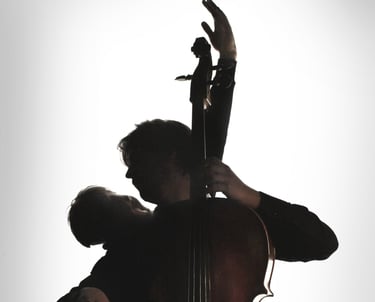

© Eyjólfur Eyjólfsson
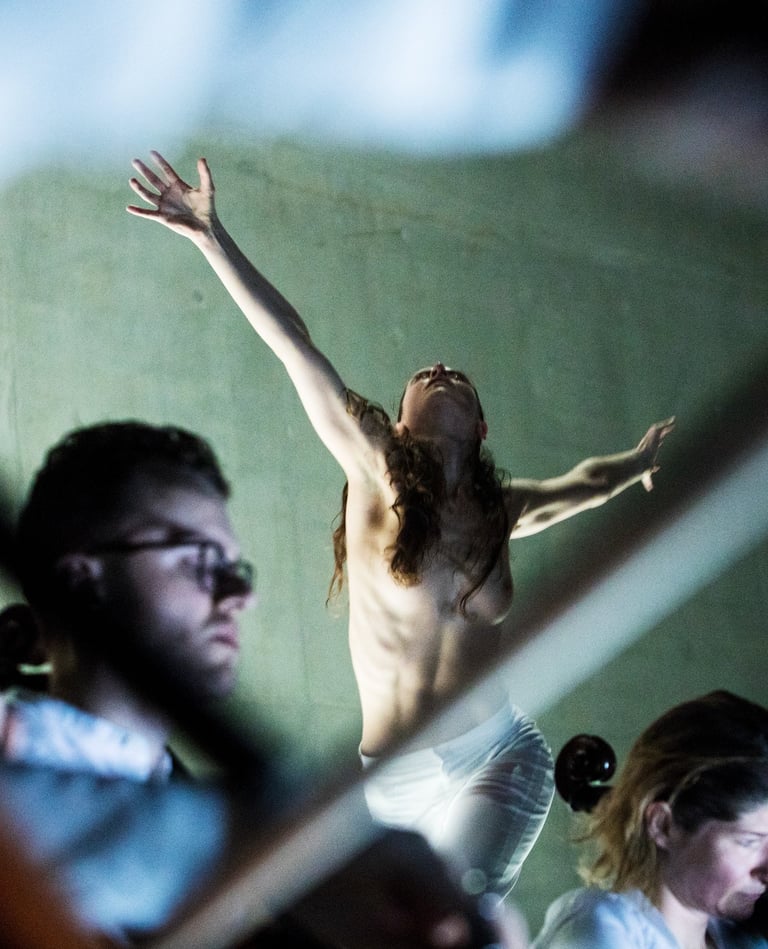




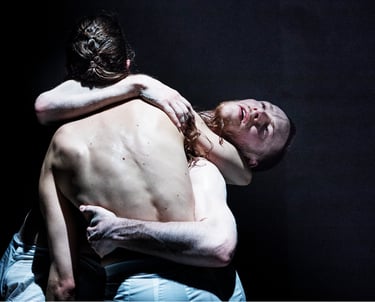
© Eyjólfur Eyjólfsson
© Joris-Jan Bos
SUMMA
The iconic music of Arvo Pärt has inspired a legion of artists for its timeless and almost ethereal quality. By transcending religious faith - a key factor in the composer's relationship to music - his work touches the essence behind our human quest for solace in times of turmoil. In his works, quietude becomes as relevant as the musical notes.
It is based on this 'music of silence' that choreographer Samir Calixto and the prestigious Cello Octet Amsterdam – in their second collaboration since Paradise Lost - join forces to create SUMMA, a performance consisting of uniquely of Arvo Pärt’s compositions.
Introducing new transcriptions specially made by the composer for the ensemble, the piece brings together eight cellists and two dancers on stage in a state of utter concentration. As the title suggests, it proposes a synthesis between the pathos in Pärt’s compositions and the innate knowledge contained in the human body: a ‘summa’ of our complexity into its most essential condition through movement and sound.
Rather than another dance performance with live music, SUMMA is a delicately interwoven synergy between disciplines, bound by the understated genius of Pärt. Here music caresses the space like whispers while dance carves it like the wind: all in all an exercise of simplicity and search for uncompromising purity.
ABOUT THE PERFORMANCE
'Calixto admitted he'd set himself a daunting task, as the musical score is so sparse, yet the atmosphere evoked so intense. But he succeeded admirably in enhancing our perception of the music, to hear that sound of silence in Pärt's meditative music. (...) Maria Chiara Mezzadri and Quentin Roger were incandescent, articulating every movement and living through every emotion with such conviction that they totally captured our hearts. The eight cellists were no less sublime, producing an almost palpable texture of sound with an intensity that was nothing but electric. Calixto has produced a gem of a work, powerful, dramatic and totally absorbing.'
- Ali Mahbouba/ Dance Europe
‘With Samir Calixto's confidently constructed dance you can easily take the music of Arvo Pärt as a spiritual infusion. The Cello Octet Amsterdam plays in the performance with a feeling for refinement.'
'It is beautiful to see that good dance can give shape to subjects which words cannot convey. To things which are so big, that you almost cannot touch. One example of that is 'Summa' by Samir Calixto, which premiered during the Holand Dance Festival. You can translate 'Summa' as a 'total vision' and that is exactly what the choreographer had in sight: what defines 'the human'? (...) The virtually perfect performance by the octet comes along this spiritual experience, that is excellently dosed and never becomes vague'
'The orchestration was ideally suited and exploited the rich tones of the cello and moved seamlessly from melodic, sublime moments to those of aggressive discord punctuated by sustained silence. The flavors and colors of the composition had echoes of Schubert, Schoenberg, Max Richter and, not surprisingly, every other cello piece you care to think of and was a joy to be immersed in.'
- Michael Hasted/ ArtsTalk Magazine

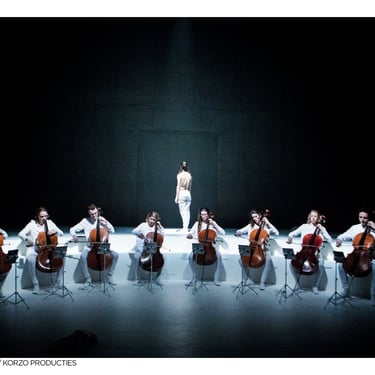
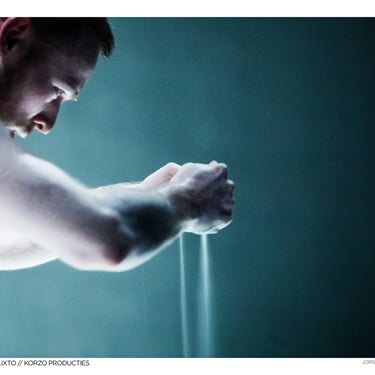
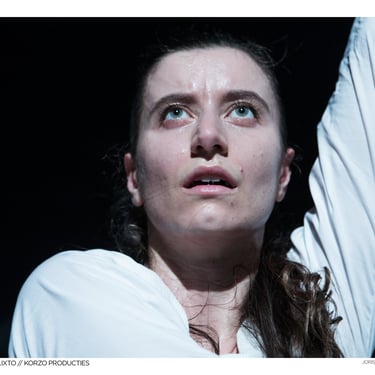


© Joris-Jan Bos
Documentary Series
by Joris-Jan Bos & Maarten de Kroon
On the terrifying beauty of silence.
Program text by Samir Calixto
The experience of stillness has become one of utter estrangement for us, humans of our times.
It is not unusual to see ourselves absent while physically present, to ‘be’ in multiple spaces while being nowhere, to virtually multiply our presence into places and situations outside of our bodies. When I say bodies I do not mean only our physical instrument: I mean the vessel which carries our perception of the inner and the outer, the processor of all sensations we live, and the soul which (eventually) inhabits this instrument. Like never before in our historical path, we have the possibility of being everywhere through virtual experiences, of communicating at lightning speed, and of being inserted into situations which are mere emulations of non-existent moments. Surely, an almost miraculous manifestation of the power of our imagination through sheer ingenuity, and a triumph which gives us great advantages and conveniences. However, such conquests are also a source of utter disconnection and ultimate illusion… and consequent frustration, as we still struggle to insert the right amount of humanity into the complexities of living in the technological age.
In that process, contemplation has become a rare exercise, something rarely experienced outside of religious frames, spiritual practices, or even through a direct touch with nature. The latter, so deeply venerated by currents such as the Romanticism, happens only too rarely for us – at least for most of us here, tonight, meeting inside a theatre in search of an experience which can reminisce that deeper touch with inner and outer landscapes.
From the start my works have focused in regaining touch with this idea of reconnection, which lies in the very cradle of performing arts, much before it became assimilated by systematized culture. Later, since the Greeks, elements such as spirituality, political awareness, social issues, it all lied together, amalgamated in the heart of the stage. Nevertheless, no matter where or when, reflecting about human nature has inexorably been in the epicenter of it, while a look at represented humanity by humanity operates as the catalyst of a society’s need.
In SUMMA, thus, we propose a take on an often overlooked necessity: the exercise of contemplation in times of radical change.
‘Silence is fecund’ said once Arvo Pärt, the wise man behind the music you will hear tonight.
These same notes, brought alive by the Cello Octet Amsterdam in these transcriptions specially made for them by Pärt, form the core of this performance.
Throughout the creation process, this music has struck us a work of profoundness and beauty. Yet, coupled with this beauty comes a terrifying sense of stillness, a deafening silence and bareness which confronted each one of us and, personally, continues to haunt my understanding of how can dance – the ultimate art of movement – convey stillness through motion without succumbing to paralysis and conceptuality. An excruciating paradox, but one which has excited us from the start.
This performance is a blind dive: into my unknown, as a choreographer, and the unknown depths of our crave for resolution, peace and conclusion. A quiet look at the hidden joys of mortality, of our impermanence, and a test of tenacity for everyone involved in it.
Facing the silence has been terrifying, but it is in its potential that we hope to convey a subtle transformative force for an age suffering from the illness of miscommunication, turmoil and sterilization of human nature through political correctness. A hopeful, quiet drop in the ocean of change which lies ahead of us, operating from inside out.
May the silence between the notes and movements speak tonight and, eventually, sow its quiet seed of transformation in this hour we will share tonight.
My gratitude to all and everyone.
Samir Calixto
Interview with Samir Calixto about the project.
Arvo Pärt called the Cello Octet Amsterdam ‘ein Goldstück’ and already wrote several compositions especially for them. How did you meet the Cello Octet Amsterdam?
I met the octet through the composer Kate Moore when we were preparing her music for Paradise Lost. We first performed a live version with four members of the group on stage and then we made a recording for the tour. After watching the premiere of the full version they got really excited about the result and we started discussing the possibility of collaborating in a future project. While going through the octet's repertoire they mentioned their relationship with Pärt and a forthcoming new album that would include transcriptions the composer made specially for the group. My immediate reaction was to propose a new piece around these compositions, and the octet shared the same enthusiasm. It just felt right, not only because of Pärt's music but also because of the octet's unique sound and musical identity. These are musicians at the top of their artistry. I went to see one of their concerts in Amsterdam before we started the project when Arvo was also present. I will never forget the beautiful intensity they created in the air that evening. It was all together, the lightest sounds married to the deepest sensations. Silence rarely sounded so loud to me.
What inspires you about Arvo Pärt's music?
For me it feels just natural to find an artistic connection with a composer like Pärt. His work is emotional without being sentimental, seemingly minimal but very complex in terms of execution, and profoundly spiritual in the broadest sense of the word. If you really look beyond the context in which he composes (heavily framed by his Christian faith) you will notice that it transcends any form of religion to a far greater extent. Even when it is based on the conventions of Christian sacred music it manages to go beyond it, just like all the great composers such as Bach, Mozart, etc. If you strip away the basis of sacred texts, this kind of music retains something utterly universal. It is deeply spiritual as it touches the purest essence of faith, of our endless attempt to understand our place and time in this earth and within ourselves. So my interest is not in the obviously religious aspect of Pärt but in the philosophical side of his music, his use of silence and contrasts that tunes into a deeper human search, which is an everlasting theme in my work.
This is the first performance that you will create at Korzo that doesn’t feature you as a dancer. Why did you make this decision? And can you tell us about the fantastic dancers that you chose?
The decision had to be made because of a commission I was offered to choreograph Schubert's Die Schöne Müllerin in Osnabrück (Germany)... something I couldn't refuse. This music is one of the closest to my heart after his Winterreise (which was my Korzo full length debut few years ago), but the creation occurs precisely during the Summa tour. Nevertheless, I don't believe these things happen only by chance. The title Summa - apart from being the name of a composition by Pärt - also stands for 'summary', a synthesis; like a reflection of where have I come after all these years choreographing, growing and experiencing my creations in a very empirical way, mostly on stage. It feels that it's time to bring this accumulation of experiences into a different perspective, the one from the choreographer who translates his universe through multiple other universes within other dancers' bodies. I have done that before but nothing feels as solid a step as Summa.
Hopefully I will be able to solidify this step with the presence of two very gifted dancers, Quentin Roger and Chiara Mezzadri. For instance, I've been working with Quentin for a while already, and so much of my own development is already very embedded in his work as a dancer. To take this artistic relation further is something I really look forward to. The same goes for my collaboration with Pavla Beranova, for the lighting design. We have been developing a way of understanding the role of lighting in the dramaturgy of my pieces. This is a deepening that needs certain distance from dancing to take place.
We are very much looking forward to your new performance. Is there something you want to say to the audience?
I am very grateful that through these years I have been able to connect to an audience that is open to the twists, turns, and directions I've taken in my different works. They seem to connect to the essence of it - which I try to keep as consistent as I can - rather to its form. I say this because there is often a precocious demand - mostly from part of the dance community - to get a very hard-cut 'language' right at the start, a recognizable 'signature' or final form when you are just beginning your development as a maker. I have consciously avoided that pressure and it seems to have paid off because I can concentrate on letting the essence define the form and not vice versa. If there is a signature by now it is a consequence of the demands of the work itself, not a formal imposition. Summa will also be another step into developing this idea. It is all about sticking to the core while keeping it simple. This is probably my most tender choreographic journey until now.
So, as usual... expect the unexpected.
